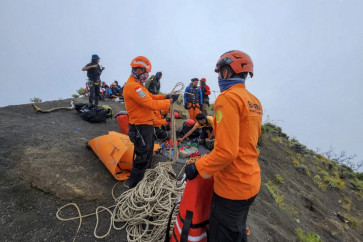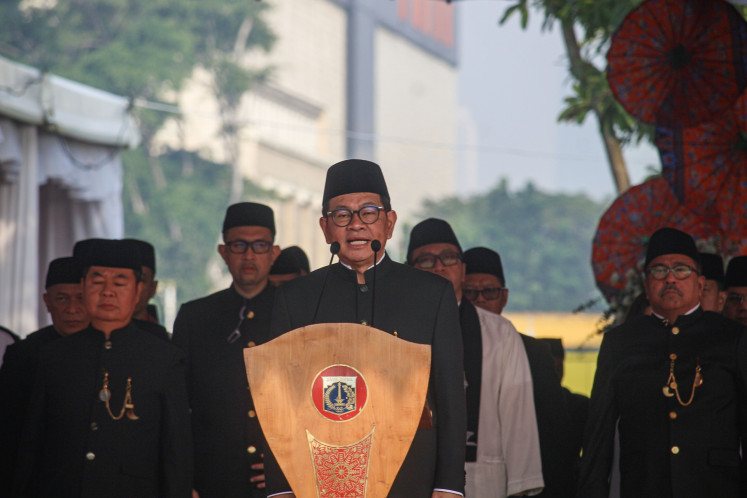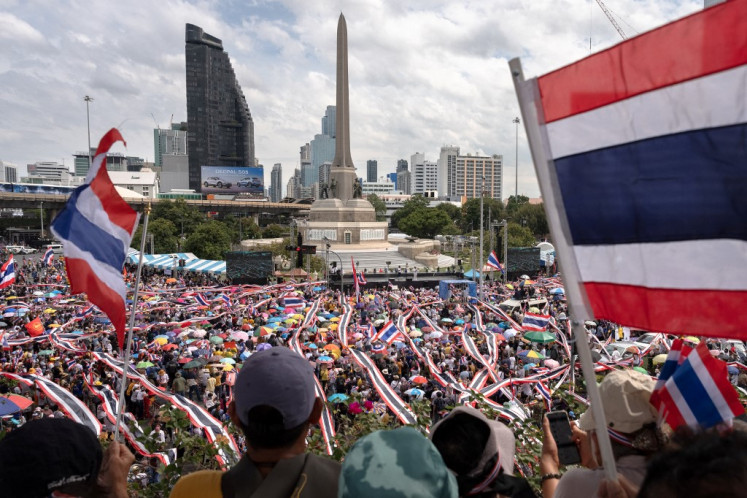Popular Reads
Top Results
Can't find what you're looking for?
View all search resultsPopular Reads
Top Results
Can't find what you're looking for?
View all search resultsThe language of transportation in Jakarta
Transportation is analogous to the cardiovascular system of civilization
Change text size
Gift Premium Articles
to Anyone

T
ransportation is analogous to the cardiovascular system of civilization. Whether by land, sea, rail or air, we create inanimate vehicles to transport ourselves to other destinations and to facilitate the essential commerce to advance the world in which we live.
These vehicles travel on manmade networks that serve as the blood vessels that nourish our cities and bring the essential energy contained in human resources, keeping the vital organs of the city functioning. And like our own hearts, the cities and municipalities draw the energy in and then return it to be replenished in a perpetual cycle.
The challenge of any city, country or municipality is how to maintain a healthy robust cardiovascular system that allows for strength and growth over time.
This is one of the most daunting urban challenges that has faced civilization since the beginning of urbanization.
I had the distinct honor the other night to speak at an @america event in downtown Jakarta. The premise of the event was creative thinking as it relates to urban solutions.
Transportation is an essential part of these urban solutions, as are all facets of civil infrastructure. The event gave me pause to reflect on the 20 plus years of living in the City of Chicago.
This is a city that was founded on transportation and over the years has grown and reinvented itself by embracing every new facet and mode of transportation. The city was initially established as an essential water-borne transportation link between the great lakes of America and the Mississippi River.
Later the city embraced freight and passenger rail and ultimately aviation, where for decades O'Hare International has functioned as the busiest airport in the world. It is easy to take for granted the convenience of a robust transportation system and it is generally hard to appreciate until one has experienced the growing pains of a city like Jakarta.
I am now on my second visit to Indonesia. My initial reaction the first time I arrived was just how difficult and time consuming it was to get from any point A to any point B in Jakarta.
This appears to be a common problem in cities experiencing population growth that outpaces the ability to increase the capacity of the transportation networks.
Regardless, there seems to be a fluid grace to the movement of the various cars, motorbikes, trucks, buses and pedestrians that navigate the narrow streets.
Despite the substandard roadway geometrics, limited traffic signals and almost no delineation or signage, the operators of the various vehicles seem to have developed a language all their own that would rival the vehicle-to-vehicle communication now being sought after for driverless vehicle technology.
It's as if the vehicle operators are dancing with each other and everyone understands the choreography. Further, if anyone doesn't understand or trust the dance the entire system reverts to gridlock.
An effective solution to the transportation dilemma in Jakarta could require as much effort in social engineering as civil engineering. Communication will be the essential ingredient of this urban solution.
This communication will involve coordination in the construction of infrastructure assets like bus rapid transit, light rapid transport, mass rapid transit and high speed rail, so that these new systems are woven into the fabric of the functionality of the existing transportation network.
It will also require communication with the community to evaluate what the demands on the system will be and how it will affect the growth of the city. Most importantly, the language of transportation spoken inherently by every user will need to both influence and adapt to the solution.
One of the daunting challenges will be to progress into more sophisticated transportation systems and networks without taking away the autonomy of the language of transportation in Jakarta. When it is realized, though, it can greatly contribute to Indonesia's commitment to sustainable infrastructure, influencing better solution for other urban challenges such as waterways and waste management.
The solution will not be easy. Right-of-way acquisition will be a challenge. Also, transportation infrastructure is expensive and there needs to be a commitment by government, business and citizens to respect the value of this investment.
Lastly, it would be interesting to observe if the solution to increasing capacity can move with the fluid grace of the vehicles and pedestrians that weave their way through the streets today. This type of communication requires both talking and listening.
More importantly, everyone involved will need to treat the process with the same trust and respect that allows traffic to flow through the streets of Jakarta unguided by anything but the language of the dance.
Perhaps a system will evolve that is uniquely Indonesian, ushering in all of the more sophisticated technologies of the modern world while allowing the best parts of the current modes of transportation to find their place in the functionality of a better, more robust system.
___________________
The writer is a Chicago-based award winning bridge engineer and inventor of patented hybrid composite beam. He received an Engineering News Record Award and was named a US White House Champion of Change for Transportation. He is in Jakarta to help shepherd better infrastructure solution.









